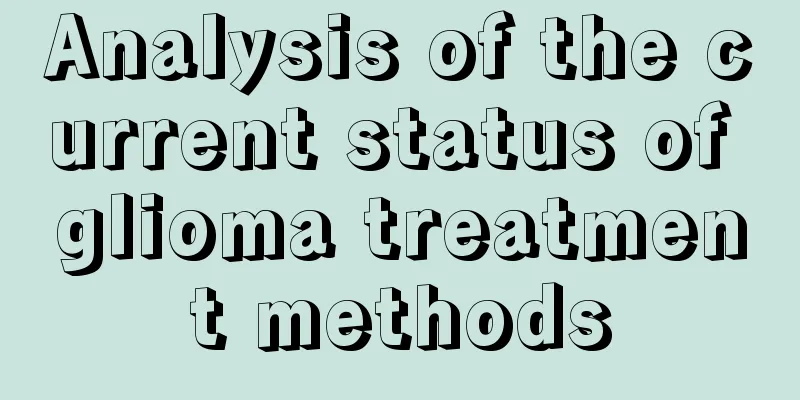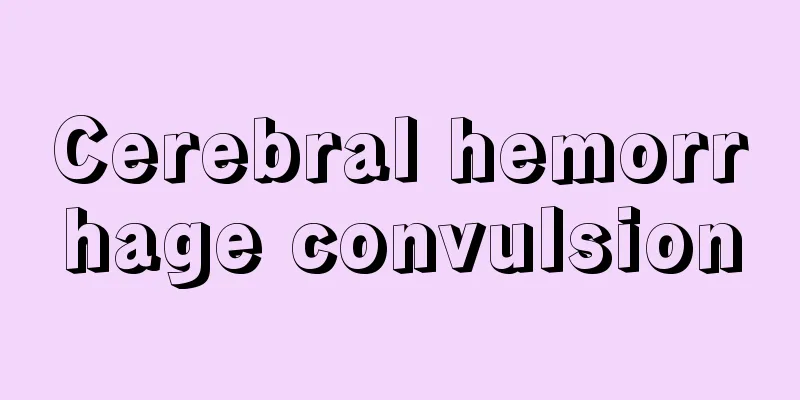Analysis of the current status of glioma treatment methods

|
What is glioma? Perhaps many people are not very clear about it. Glioma is a common tumor cell disease in clinical practice. Once the disease progresses, it will have a great impact on the patient's brain nerves. In order to let more people understand glioma, let's analyze what glioma is and the current status of its treatment methods. Glioma is a type of tumor with very special tumor cell origin, pathological structure, biological characteristics and clinical symptoms. The incidence of brain glioma is 3-10/100,000, accounting for 1%-3% of all malignant tumors in the body. The survival period after treatment is 8-11 months after tumor onset. The growth characteristics of gliomas are infiltrative growth, with no obvious boundaries from normal brain tissue. Most of them are not limited to one lobe of the brain, and they penetrate deeply into the brain tissue in a finger-like manner. Glioma occurring in the cerebral hemisphere accounts for about 51.4% of all gliomas, with astrocytoma being the most common, followed by glioma and oligodendroglioma. The ventricular system is also a common site for gliomas, accounting for 23.9% of the total number of gliomas, mainly tunica, medulloblastoma, astrocytoma, and cerebellar glioma accounts for 13% of the total number of gliomas, mainly astrocytoma. Glioma is not without symptoms. Usually, when doctors say there are no symptoms, they are mainly about the lack of motor, language, sensory and visual field damage. After careful examination, it is found that 30-50% of patients have cognitive dysfunction, such as memory, emotion, decision-making, judgment, working memory and other aspects. This also shows from another perspective that low-grade gliomas cannot wait for observation, but need active treatment to relieve the aggravation of symptoms. Benign gliomas grow slowly and have a long course of disease, with an average of two years from the onset of symptoms to the time of medical treatment. Malignant gliomas grow quickly and have a short course of disease, with most cases taking less than three months from the onset of symptoms to the time of medical treatment, and 70-80% taking less than half a year. Early detection and treatment of brain gliomas can prolong the patient's life. Specific treatment methods are as follows: Surgery: Surgical treatment is based on the growth characteristics of gliomas. Theoretically, it is impossible to completely remove them by surgery. Some tumors growing in important parts such as the brainstem cannot be operated on at all. Therefore, the indications for surgery are: reducing tumor volume, reducing the number of tumor cells, improving symptoms, relieving symptoms of high intracranial pressure, and prolonging life. Radiotherapy: Radiotherapy is almost the routine treatment for all types of gliomas, but the evaluation of the efficacy varies. Except for medulloblastoma, which is highly sensitive to radiotherapy, and ependymoma, which is moderately sensitive, other types are not sensitive to radiotherapy. Some observations believe that the prognosis of radiotherapy and non-radiotherapy is the same. In addition, the impact of radiation-induced radiation necrosis on brain function should not be underestimated. Chemotherapy: In principle, it is used for malignant tumors, but chemotherapy drugs are limited by the blood-brain barrier and drug toxicity and side effects, and the efficacy is still uncertain. Commonly used BCNU, CCNU, VM-26, etc. have an effective rate of less than 30%. γ-knife - both belong to the category of radiotherapy. Due to the location of the tumor, the size of the tumor (generally limited to less than 3 cm) and the sensitivity of the tumor to radiation, the scope of treatment is limited. It is currently believed that gliomas, especially malignant astrocytic grade III-IV or glioblastomas, are not suitable for R-knife treatment. |
<<: What are the treatments for thyroid cancer?
>>: What are the preventive measures for pituitary tumors
Recommend
Can taking medicine prevent stomach cancer?
The fast pace of modern urban life and irregular ...
5 measures to prevent bone cancer
Bone cancer brings great pain to patients. Measur...
The benefits of hot compress on the navel
The most commonly used tools for hot compress in ...
How to wash yellow pillowcases
If the pillow is dirty, it is very troublesome to...
Diet care after surgery for early bladder cancer
Bladder cancer is a malignant disease that develo...
How to improve metabolism
For many people, the human body must have necessa...
How to use loose powder
For women who love beauty, they must ensure that ...
It is best to take a bath every few days in winter
Many people do not take a bath frequently in wint...
The extragastric manifestations of early symptoms of gastric cancer are specifically introduced as follows
The early symptoms of gastric cancer can be divid...
What's wrong with being half asleep and half awake when sleeping
Good sleep is a prerequisite for a person's g...
Can people with chronic urticaria donate blood?
Chronic urticaria is a relatively common skin dis...
Introduction to fibroid disease
Fibroid is one of the common diseases in daily li...
Cold sweats on chest at 3am
In our current lives, many people have frequent n...
What exercises can breast cancer patients do
What exercises can breast cancer patients do? 1. ...
How to care for gastric cancer during chemotherapy?
The chemotherapy regimen for gastric cancer patie...









